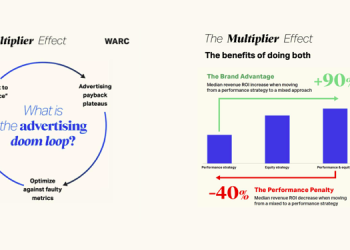Key findings in PwC’s latest five-year outlook on entertainment and media revenues, which points to “unprecedented challenges” for companies in this changing landscape, include internet advertising overtaking broadcast in the U.S. for the first time next year and China becoming the world’s box-office leader.
The Global Entertainment and Media Outlook 2016-2020 projects that worldwide entertainment and media revenues will hit $2.1 trillion in 2020, a 4.4-percent compound annual growth rate, slower than last year’s 5.5 percent. PwC notes that while there are “drastic” slowdowns in some markets, others are seeing “spectacular” levels of expansion. Of the 54 countries covered in the outlook, 36 will see E&M spending grow faster than GDP. These markets include Venezuela, Brazil, Pakistan and Nigeria.
“Entertainment and media companies are facing an ever more complex global environment—one in which every market has its own unique growth dynamics, shaped by local factors ranging from demographics to content tastes to infrastructure to regulation,” said Deborah Bothun, PwC’s Global Entertainment and Media Leader. “To see through the apparent chaos and pinpoint value opportunities, companies need a more intimate understanding than ever before of the forces at play at a local level. Armed with such insights, both established and emerging players are well-positioned to capitalize on the industry shifts and lead the next phase of growth.”
PwC has identified key shifts in the landscape that companies need to be aware of. They include that younger consumers (under-35s) are driving global growth; content tastes are still highly local, even as the industry becomes more global; consumers want to “design and curate their own media diet”; and companies must realize that in addition to fast-growing developing markets, they need to continue to focus on territories with the greatest absolute dollar growth, such as the U.S. and China.
“Today’s entertainment and media reality is one of companies intensely competing for dollars with the increasing proliferation of free online media alternatives,” said Bothun. “This global multi-speed media landscape has created unprecedented challenges for companies in the battle for customers and value. The acceleration of digital and technology innovation is expected to continue to force companies to innovate and reimagine the industry as we know it.”
She added, “For content providers across the entertainment and media industry, the message is clear: seamless delivery and a focus on the consumer experience is the formula for growth in today’s evolved E&M business landscape. With a clearer picture of what’s ahead, savvy companies will be best positioned to embrace change and choose a path that allows them to look ahead with confidence.”
Globally, PwC projects a total television ad pie of $210.3 billion in 2020, of which $144 billion is from terrestrial television and $56.2 billion from multichannel. Online TV advertising will rise to $10.2 billion in 2020. Terrestrial’s share in 2020 will be 68.4 percent.
The U.S.’s share of the TV ad base was 41.8 percent last year; that number is expected to fall to 38.9 percent in 2020. It will remain the largest single market, but Brazil, India and China are all expected to take a greater share of the total.
Internet advertising in the U.S. will reach $93.5 billion by 2020, overtaking broadcast TV advertising in 2017 when it hits $75.3 billion. However, PwC says that broadcast “has responded fairly robustly to digital disruption.” U.S. TV ad revenues will be $81.8 billion in 2020, with $45.9 billion from terrestrial TV and $30.4 billion from multichannel.
Global spending on TV and video is expected to reach $318.3 billion in 2020, a compound annual growth rate of 2.5 percent. TV subscription revenue will account for $241.2 billion.
China is on track to become the world’s biggest box-office-revenue generator in 2017, overtaking the U.S. Box office revenues in China will reach $15.1 billion by then. “Studios are facing increasing international competition with foreign governments—the challenge will be how to tap into this opportunity given strict market conditions,” Bothun said.















